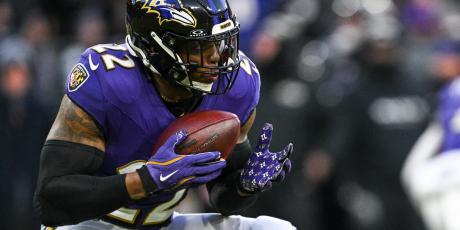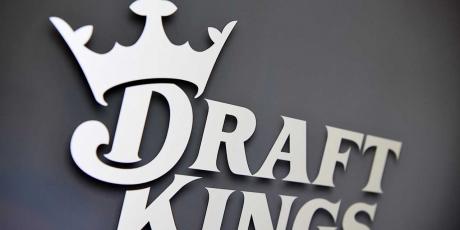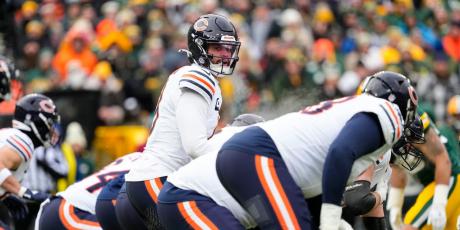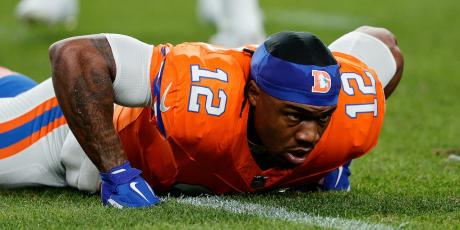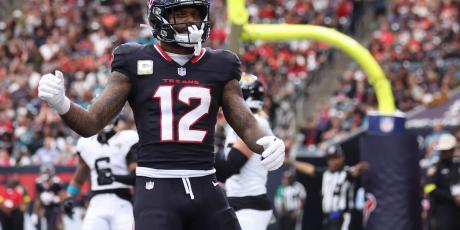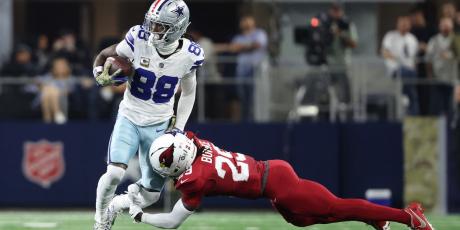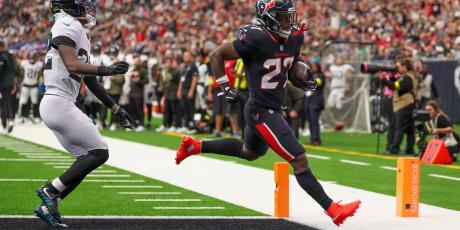How Long to Hold Onto a Rookie Wide Receiver

Once the fantasy football regular season starts, there is always one question that goes through a manager's mind: How long should I hold on to this player before offering him up for the hot new waiver pickup? There will almost always be players on the waiver wire worthy of a speculative add, but choosing which specific player to drop can be an equally important decision as to who to pick up.
One particular set of players people draft with the intent of holding onto for several weeks and that managers are skeptical of dropping too soon are rookie wide receivers. Managers have a hard time letting go of them because they often do not break out until the second half of the season (more on that in a moment). With a depressed ADP, rookie wide receivers can offer extreme value if managers are patient enough to hold onto them.
Last year we saw Justin Jefferson, Chase Claypool and Tee Higgins have phenomenal rookie seasons that catapulted managers to league championships. This year, players like Ja'Marr Chase, DeVonta Smith, Jaylen Waddle, and many more have a chance to carry teams to fantasy football championships. Throughout this article, I hope to identify the statistical traits star rookie wide receivers exhibit early in their first season so that you know when to hold onto them or pursue them via trade.
More Fantasy Football Studies: 4 Position Trends to Exploit | Fantasy Implications of QB Change | Characteristics of an Early-Round Bust
Introduction and Methodology
As I mentioned, there have been countless studies showing rookie wide receivers do not typically break out until the second half of a season. One piece of evidence is in the chart below, which shows that wide receiver fantasy production is lower in the first half of the season than the second half, as has been the case for the past several years.
 For this article, I will apply best ball win rates to players as a measure of success. I have defined a win rate over 9% as "Above Average" and a win rate below 9% as "Below Average." Statistically, an average win rate is 8.33 percent, but I wanted to provide slightly more differentiation.
For this article, I will apply best ball win rates to players as a measure of success. I have defined a win rate over 9% as "Above Average" and a win rate below 9% as "Below Average." Statistically, an average win rate is 8.33 percent, but I wanted to provide slightly more differentiation.
The hope is that we can identify whether a rookie wide receiver will have an above-average win rate earlier in the season, signifying that he is worth holding on to (or adding if he was not drafted). Obviously, there are other ways of evaluating a player's success, but win rates offer a lens into which teams won league championships with those players. For example, a player can still post solid fantasy scores in the final weeks of a season and carry you to a championship, but what we are looking for here are players who can become mainstays in your lineup for several weeks.
Finally, before getting into the results, let me take some time to explain the decision tree technique I used to evaluate these receivers. A decision tree is a method used to classify observations (in this case, above- or below-average wide receiver seasons) in a flow-chart-like structure. It is simply a set of cascading questions you follow down the decision tree chart to ultimately determine if an observation (in this case, a wide receiver) fits into one category or another. This legend can be used as a guide to deciphering the ensuing decision trees.
Now, onto the results!
First-Four-Week Evaluation
In this first decision tree, we have a sample of 53 rookie wide receivers since 2017 who have a recorded win rate. Here is that decision tree:

The first split we see happens at a threshold of ~36 receiving yards per game. While this may not sound like a lot, approximately seven rookie receivers per year have averaged this many yards per game through four games since 2017. Over half (16 of the 23) of the receivers with an above-average win rate reached this mark in the first four games.
Continuing down the right side of the tree, 12 of the remaining 16 above-average wide receivers had a RACR of at least 0.69. RACR, or receiver air conversion ratio, measures the efficiency with which a receiver converts air yards to actual receiving yards. Generally, an elite pass-catcher will have a RACR above one, so the bar is not exceptionally high.
A final split is made at a yards per reception (YPR) of 12, but it is inconsequential as it just removes the one below-average receiver in the previous group. If we return to the players who have a RACR below 0.69, then we see that the remaining four above-average receivers have an air yards share (AYPct) over 21.5%. Based on this, the statistical profiles we’re looking for are those with 36+ receiving yards per game and a RACR above 0.69, or an air yards market share over 21.5%.
Yes, there are still seven above-average receivers left to account for, but their profiles are much more intermingled with those of the below-average seasons, so we will ignore them for now. All this said, it can be difficult to let go of any player after just a four-week sample size, regardless of what the data says. So, in the next section, I applied the same methodology using a player's first eight games.
First-Eight-Week Evaluation
The eight-week decision tree is a little bit easier to interpret and uses a sample of 41 rookie wide receivers. Here is the decision tree using eight weeks of receiver production:

First, we see that the bar is raised for RACR with the threshold set at 0.88 (up from 0.69 in the first tree) and each of the eight above-average wide receivers in this model posted a higher RACR than that. Following the decision tree to the final leaf, the statistical profile we are looking for fleshes itself out rather cleanly. All eight of the above-average receivers have a profile of a RACR over 0.88, at least 40 air yards per game and an average depth of target (noted as AYPerTgt in the model) of at least 11 yards.
Players to Target
Based on the statistical profiles I have identified, there are a couple of rookie receivers who stand out as players who could hit these thresholds based on 4for4’s projections and their college production.
Ja'Marr Chase, Cincinnati Bengals
This is an easy one as Ja'Marr Chase is currently the top rookie wide receiver being drafted by several rounds, despite struggling with drops throughout the preseason. We currently have Chase projected for 53 receiving yards per game and just over 13 yards per reception, which would meet two of the criteria we are looking for. Chase will have to compete for targets with Tee Higgins and Tyler Boyd, but his 19.6 yards per reception in college show how big of a threat he can be.
DeVonta Smith, Philadelphia Eagles
DeVonta Smith has a chance to immediately step in as Philadelphia’s number one wide receiver, which makes him a prime candidate. He also leads our projections for rookie wide receivers at 56 receiving yards per game. Additionally, Jalen Hurts boasted a 9.1-yard average depth of target (2nd-highest) in his four games last year, so we know Hurts will target his receivers downfield.
Nico Collins, Houston Texans
This one is a little bit more under the radar, but Nico Collins has impressed throughout the preseason and we have him projected for about 38.5 receiving yards per game. With little competition outside of Brandin Cooks, Collins has an opportunity to secure a solid share of Houston’s air yards as they rank second in vacated air yards heading into the season. I really love Collins as a late-round draft target who could quickly find a solid role in an offense that figures to be passing a lot.
This, by no means, is an exhaustive list, but will hopefully give you a sense of the types of receivers to target and consider holding onto throughout the season.
Bottom Line
- Rookie wide receiver fantasy football production typically increases in the second half of the season, so quickly identifying which will break out is vital.
- In the first four weeks of a rookie wide receiver’s season, he will often have an above-average win rate if he averages over 36 receiving yards per game and a RACR above 0.69 or an air yards market share over 21.5%.
- In the first eight weeks of a rookie wide receiver’s season, he will often have an above-average win rate if he has a RACR over 0.88, at least 40 air yards per game and an average depth of target of at least 11 yards.

